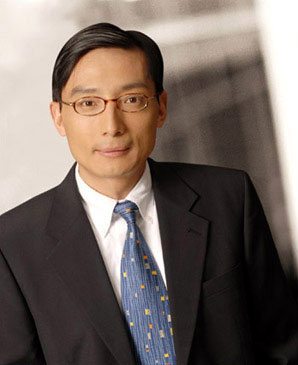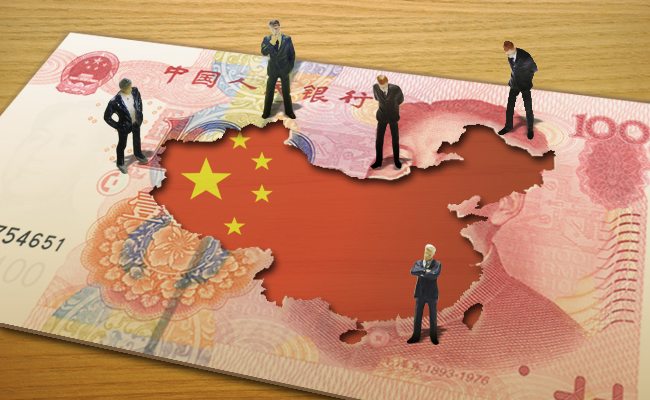Slow growth in the Chinese economy will put pressure on local governments’ ability to repay their debts.
In the past few months, a series of developments in the Chinese economy have rattled global investors, and sent ripples of shockwaves across markets throughout the world.
The “forget-about-Greece-China-is-the-real-threat” rhetoric has therefore spread quickly among the Western media. “Whatever you might think [about the Chinese economy], it’s worse,” said Jim Chanos, a well-known short seller and a long-time China bear, in a CNBC interview earlier this month.

As growth continues to slow down in the world’s second-largest economy, China is at the crossroads: it has to prop up the economy the old-fashioned way and also push forward structural reforms to lead the country onto another growth trajectory. In this context, some policy changes can be interpreted drastically differently by observers, and many may be confused about the true intentions of those policy moves.
One example is the debate over the central bank’s (People Bank of China, or PBOC) recent decision to reform the mid-point determination mechanism of the RMB exchange rate, which resulted in the sharpest drop of the currency’s value in almost two decades. Critics believe that the PBOC intentionally devalued the RMB to boost anemic exports; others argue that while the timing is not convenient, the central bank needs to use the window (when conservatives may agree to the reform for the sake of supporting growth) to push forward its agenda.
To make sense of where the Chinese economy is and the implications of the central government’s policy moves, we speak with Li Wei, Professor of Economics at Cheung Kong Graduate School of Business, to get his views on some of these hot button issues.
A Double-edged Sword
After adjusting the RMB parity rate mechanism on August 11th, the PBOC on August 25th announced that it would cut both the interest rate and the required reserve ratio for commercial banks. Bank officials insist that the moves do not mean a change of direction in China’s prudent monetary policies; instead, the central bank is just reacting to changes in money supply and other market conditions.
Li Wei agrees that the rate cuts are a means to compensate for the fall of money supply due to the capital outflow from China. Capital outflow has rapidly increased in recent months, and therefore China’s money supply increase is slowing down, short of the target rate so far in the first half of the year.
But on the other hand, lower interest rates may drive more capital to leave China, pressing down on the RMB exchange rate along the way. And that’s why the PBOC has been selling US dollars to prevent the RMB exchange rate from dropping too far. “When we move more towards a floating exchange rate, there are going to be contradictions,” Li says. “This is a trying time for the central bank.”
Bullish on the RMB
Although short-term volatility may send the RMB even lower, Li Wei believes that the Chinese currency will strengthen over the longer-term as the economy continues to gain productivity. Li says that while China still records a significant trade surplus, it makes sense for China to eventually move from a net exporter to a net importer in the process of transforming the economy to be more consumption-driven.
The other determining factor of the RMB exchange rate is the US dollar’s performance in the near future, Li says. If the Federal Reserve did raise interest rates later this year, the RMB will depreciate more against the US dollar. But at the same time, the RMB may appreciate against a basket of other currencies, as many central banks are engaging in aggressive monetary easing around the globe.
The Stock Market Lesson
Chinese shares have fallen about 38% since the peak in mid-June, despite the government’s efforts to support the indices by directly buying into the stock market a little short of two months ago.
Li Wei says the interventions, including halting IPOs after it announced to reform its rigid approval system, come with high costs. “None of the interventions are completely benign,” Li says. “When the government pushed the Shanghai Composite back to around 4,000 points, it looked like they had won, but they didn’t—the index fell even lower.”
The lesson here is that the government should only go in when the market has fallen to a level that presents the fundamental value of those shares. But the paradox is that if there’s a consensus on the fundamental value, then the market will correct itself without the help of the government. “That’s what the market mechanism is really all about—you should allow it to play its role,” Li says.
Debt Woes
A slew of economic indicators have shown that the Chinese economy is facing more downward pressure, including CKGSB’s Business Conditions Index (BCI). The BCI registered 52.1 in August, a slightly pick-up from July’s 51.6, but still far from May’s 61.3.
“Given the current situation, we think it’s very likely that China will have a growth rate below 7%,” Li says. “Some people may get alarmed. But in general, I think 6% is good, even 5% is okay. We are just so used to high growth rate but we can’t grow like that forever. ”
While Li believes that slower growth is not as nerve-wracking as many suggest, the debt risk shouldn’t be overlooked. Li says as growth slows, local governments and their financing vehicles, which borrowed aggressively in previous stimulus cycles, will face more pressure to repay their debts. He points to China’s flat industrial value-added tax growth in the first seven months of the year and that the land auction revenue has declined more than 25% for local governments.
Even though Beijing has rolled out plans for local municipalities to swap their debt into longer-term bonds, not every region has the creditworthiness to borrow from the bond market cheaply, according to Li. “My concern is not that the growth rate is slowing; I’m worried about what happens next.”
Watch the video below: Li Wei on why the “quantitative tightening” argument is overblown




















